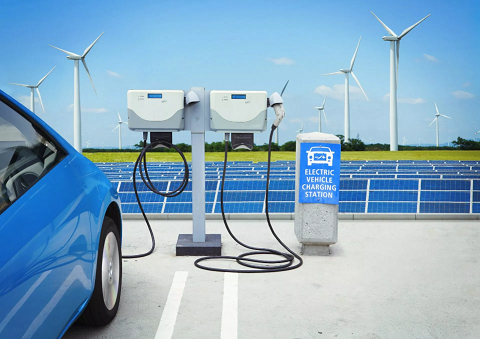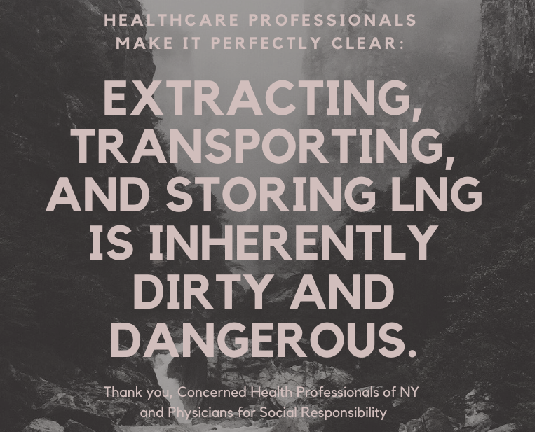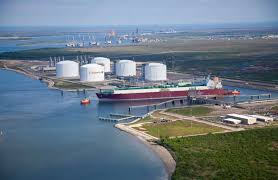
Poll shows broad support for Regional Greenhouse Gas Initiative in PA
October 12, 2020
Health Professionals Oppose Gibbstown LNG Export Terminal
December 5, 2020Download the Week of Action Toolkit to see what you can do to fight the Gibbstown LNG export terminal. The Toolkit includes talking points, contact information for the governors of DE, NJ, NY and PA, a calendar of actions, and sample signs and images. Add your voice to the chorus opposing this dangerous project!
For Immediate Release
December 4, 2020
Governors’ Offices in New Jersey, New York, Pennsylvania and Delaware – People from all four Delaware River Watershed states joined together to amplify their opposition to a Liquefied Natural Gas (LNG) export terminal proposed for Gibbstown, New Jersey, sending strong messages to the governors of New Jersey, New York, Pennsylvania, and Delaware, ahead of a likely vote on the permit at next Wednesday’s December 9 meeting of the Delaware River Basin Commission.
New petition signatures opposing the LNG project submitted to DRBC since September 8, 2020 total 49,730 names, bringing the total petitions submitted to DRBC this fall to over 100,000. A coalition of organizations has been generating thousands of emails, letters, petitions and other expressions of opposition to the export terminal since the DRBC voted in September to put the current permit in abeyance. The DRBC vote included a “stay” on construction of “Dock 2”, the wharf that New Fortress Energy subsidiary Delaware River Partners want to build for their project to ship LNG overseas.
The terminal project would bring supercooled fracked gas from Pennsylvania, by either rail or a fleet of trucks. It has drawn staunch opposition for a range of reasons: The additional fracking in Pennsylvania would create pollution in the communities close to the drilling and in Wyalusing Township where the gas liquefaction plant would be located, while the transport of the LNG to Gibbstown would represent a serious health and safety threat to hundreds of thousands of residents along the route. Critics also cite the negative impacts of the dock project on the Delaware River, including threats to water quality and vulnerable and rare habitats for plants and animals, including the federally endangered Atlantic and Shortnose sturgeon.
The DRBC commissioners have been conducting an in-depth review of the voluminous record produced by the legal challenge that Delaware Riverkeeper Network filed against the project in 2019, which was the subject of an 8-day adjudicatory hearing in May.
Today, flash drives containing the declarations of public opposition were submitted to each of the governors, as well as the Army Corps of Engineers, which has the fifth vote on the Commission. Public participation in the original DRBC decision to approve the project was rushed and inadequate, leading to a huge public controversy over the last months.
Included in the submission are 49,730 petitions (in addition to the 50,962 petitions submitted on September 8 to the DRBC, totaling 100,692), newly adopted resolutions passed by local governments along the truck and rail routes where the LNG would be carried to Gibbstown from northcentral Pennsylvania, as well as by Delaware communities with grave concerns about the enormous LNG tank ships. Sign-on letters from officials and community organizations are also being submitted.
The Story of Community, Organizational, and Local Government Opposition
Petitions, Emails, Declarations of Public Opposition
In addition to the 50,962 signatures on petitions calling for the DRBC to vote NO on the permit for the proposed Gibbstown LNG export terminal in September, another 49,730 petition signatures are being submitted today. In addition, emails, tweets, Instagram messages and faxes/calls have been sent to the Governors and the Army Corps of Engineers by thousands of people during the Coalition’s Week of Action November 30 to December 4. For example, Tweets sent to the Governors: 2,818 using #DRBCNOLNG in a Dec. 1 Twitter Storm. See those tallies from Twitter here: https://bit.ly/33HczrS
Over the last weeks, these declarations have been generated by many organizations working together to oppose the project, including: 215 People’s Alliance, 350 Philadelphia, Berks Gas Truth, Better Path Coalition, Breathe Project, Bucks Environmental Action, Catskill Mountainkeeper, Clean Air Council, Clean Water Action, Coalition to Ban Unsafe Oil Trains, Damascus Citizens for Sustainability, Delaware Riverkeeper Network, EMPOWER NJ, Environment New Jersey, Food and Water Action, Food and Water Watch – NY and NJ, Friends of Sparta Mountain Associated with NJ Forest Watch, Friends of the Earth, Mark Ruffalo for Move.On, Natural Resources Defense Council, New Jersey Sierra Club, New Jersey Student Sustainability Coalition, Northwest Philly Climate Action Network, Not Here Not Anywhere – Ireland, PennEnvironment, Pennsylvanians Against Fracking, Philly Boricuas, POWER, Protect Northern PA, Resistance Cafe, Sierra Club PA Chapter, Surfrider NJ, DE, and NY, Waterspirit.
###
B. Arrindell, Director of Damascus Citizens for Sustainability, stated, “With the exponential decline of fracked wells resulting in only 15% of initial production in two years, an expanding drilling treadmill is required to supply the gas needed for the LNG to be exported from Gibbstown. All this drilling will add volumes of greenhouse gas pushing global climate change. DRBC has promised to protect against advancing climate change so should not approve the Dock 2 project.”
Download the full Press Release, which includes comments by additional organizations and government resolutions opposing the Gibbstown LNG export facility.
###
Background:
Controversy has been swirling around the proposed export of LNG from the Gibbstown Logistics Center, a deepwater port in Gloucester County since the discovery of the plans were unearthed through Freedom of Information Act requests last year. Delaware River Partners, a subsidiary of New Fortress Energy, aimed to expand the terminal with a second dock (“Dock 2”) that would export LNG overseas, but they had kept their intention to export LNG secret for years. DRBC confirmed the LNG export plans at a quickly called public hearing in June 2019 and approved a permit for Dock 2 less than a week later. In addition to adding LNG to the planned export of natural gas liquids, Dock 2 would potentially triple the previously planned activities at the facility.
In July, the hearing officer who oversaw the legal proceedings challenging the 2019 DRBC approval recommended that the Commissioners affirm the original decision. After reviewing the record and several more legal filings, the Commissioners are now required to vote publicly on whether or not to accept the Hearing Officer’s recommendation or reject it.
Despite being a public agency, the DRBC has not been clear with the public about the action expected at the December 9 meeting. The meeting agenda states that the DRBC “may” vote on the permit (Docket D-2017-009-2) and that “possible” action could be taken (their emphasis). Yet in an October 13 letter to the applicants Delaware River Partners, obtained through the Freedom of Information Act, DRBC Executive Director Steve Tambini stated, “The Commissioners informed me that they anticipate completing their review in time to take action at the next regularly scheduled business meeting of the Commission on December 9, 2020.” This is a much more definitive statement, and when coalition organizations disclosed this in November, they asked why this language was not used in the public agenda. The public deserves to know what is being said; conversations regarding public decisions should never be going on behind closed doors. To see more on this go to: https://bit.ly/3qnNhst
The Gibbstown LNG export project has many complicated parts, adding up to a footprint with massive impacts. The gas would be extracted from fracking wells in Pennsylvania’s Marcellus Shale, and sent to a processing plant New Fortress Energy, the same company that owns the Gibbstown facility, is building in Wyalusing, Bradford County, PA on the beautiful Susquehanna River. From there the liquefied methane, or LNG, would be carried by truck and/or rail every day about 200 miles across PA and NJ to Gibbstown, exposing hundreds of communities along the way to the threat of a catastrophic accident. See maps of the potential routes here: https://bit.ly/3gaCBYg and https://www.delawareriverkeeper.org/taxonomy/term/1174
At Gibbstown, LNG will be loaded round the clock directly into enormous ships, putting the entire region, including Gibbstown where back yards adjoin the property, Tinicum Township, PA less than mile across the river and environmentally overburdened Chester, PA, at risk from explosion during these dangerous operations. See details in the Fact Sheet here: http://bit.ly/factsGtown
Known adverse impacts include: water quality, endangered species such as Atlantic and Shortnose sturgeon, and rare, vulnerable habitats for many animals and plants will be harmed or destroyed by the terminal, the dredging, and the construction and operation of the proposed Gibbstown “Dock 2” LNG export terminal. The ships, dubbed “floating bombs” by some experts, would pass next to densely populated cities such as Wilmington and the Delaware and New Jersey bay shores and coastal beaches as they travel out to sea to import terminals proposed by New Fortress in Ireland, Puerto Rico, and beyond.
Public opposition is fueled by the far-reaching and unavoidable environmental, public safety and health harms caused by fracking for the gas, liquefying the methane, transporting and handling the flammable and potentially explosive LNG and its ultimate use as a burnt fuel. These concerns are compounded by the recognition that methane is the most potent of greenhouse gases in warming the atmosphere during the next critical 10 years, worsening our global climate crisis and threatening us now and our future generations.




